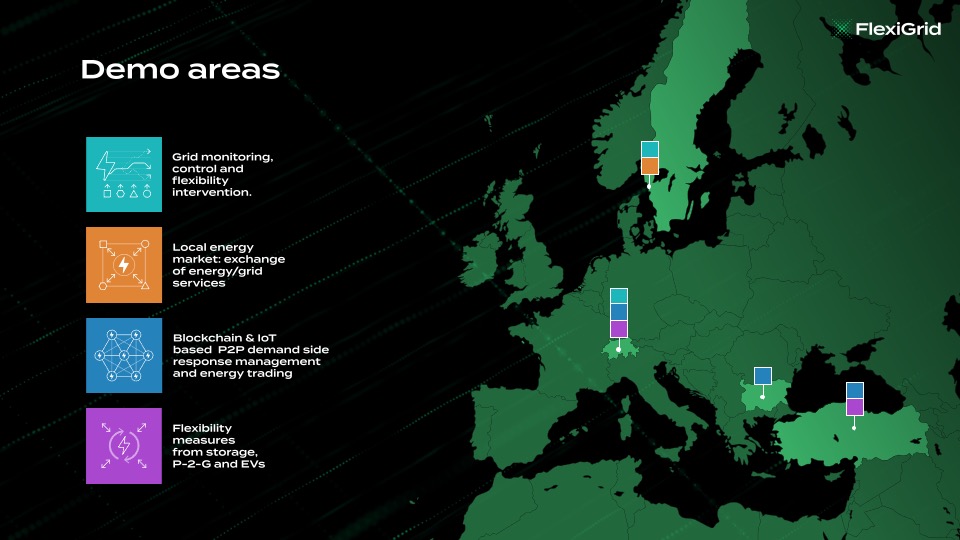
In the evolving world of energy distribution, flexibility has become the watchword. With the surge of renewable sources, there’s a dire need for flexible solutions to maintain grid stability.
The FlexiGrid project has stepped in to support Distribution System Operators (DSOs) in various countries. They aim to enhance grid reliability through the adoption of flexibility technologies. Here’s an insight into how the countries where FlexiGrid’s demonstration sites are – Sweden, Bulgaria, Turkey, and Switzerland – are leveraging these technologies and what they’ve gleaned from the project.
Sweden:
The Swedish grid faces the challenge of managing increased electrification, especially with the influx of intermittent energy sources like wind and solar; here, flexibility will contribute to maintaining the grid balance. The Swedish DSO highlighted a pressing need for legislative adaptability. While the country has made strides in implementing flexibility solutions, the existing legislative framework lags behind, struggling to accommodate newer technologies and management strategies. The FlexiGrid project has brought to the fore the crucial role of aggregators in ensuring grid stability. Sweden anticipates a shift where flexibility becomes a cornerstone of its energy strategy.
Bulgaria:
Bulgaria’s grid story is one of rapid change. In recent years, the integration of a vast number of renewables has caused a significant shift in the energy flow dynamics. Traditionally, the role of DSOs was linear: transporting electricity from transmission to consumers. Now, they often find energy flowing in reverse, from distributed sources back to the grid. This reverse flow demands advanced flexibility solutions. The FlexiGrid project highlighted the need for Bulgarian DSOs to transition from a mere logistics entity to a holistic service provider, ensuring reliable energy supply while managing variable inputs.
Turkey:
Turkey presents an interesting case of potential waiting to be tapped. Currently, most of the Turkish DSOs don’t have an immediate need for flexibility on the grid level, mainly due to the limited presence of electric vehicles (EVs) and distributed energy resources. However, as the FlexiGrid project underlined, the future landscape could change dramatically. With an expected increase in distributed resources and electric vehicles, Turkish DSOs will face new grid challenges. Preemptive action, in the form of clear regulatory frameworks and development of flexibility markets, will be key to smooth transitions in the coming years.
Switzerland:
The Swiss partners’ journey in the FlexiGrid project spotlighted the multifaceted nature of flexibility. The country already employs hydraulic power for grid regulation, but the potential of flexibility goes beyond this. Differentiating between industrial and residential flexibility, Switzerland has recognized the potential of various business models, from dynamic tariffication to blockchain platforms. The challenge lies in aggregating and regulating this flexibility, calling for well-defined regulations and solutions. Like Turkey, Swiss DSOs don’t have an immediate need for flexibility on the grid level.
Concluding Thoughts:
The FlexiGrid project has illuminated the diverse needs and strategies of DSOs across these nations. While some countries, like Sweden and Bulgaria, grapple with integrating and managing a surge of renewables, others like Turkey are in the preparatory phase, anticipating future challenges.
However, the universal takeaway is clear: flexibility, powered by technological innovation and legislative adaptability, is indispensable. As the energy landscape continues to evolve, initiatives like FlexiGrid play an invaluable role in navigating the change, ensuring a stable, sustainable, and efficient energy future for all.
